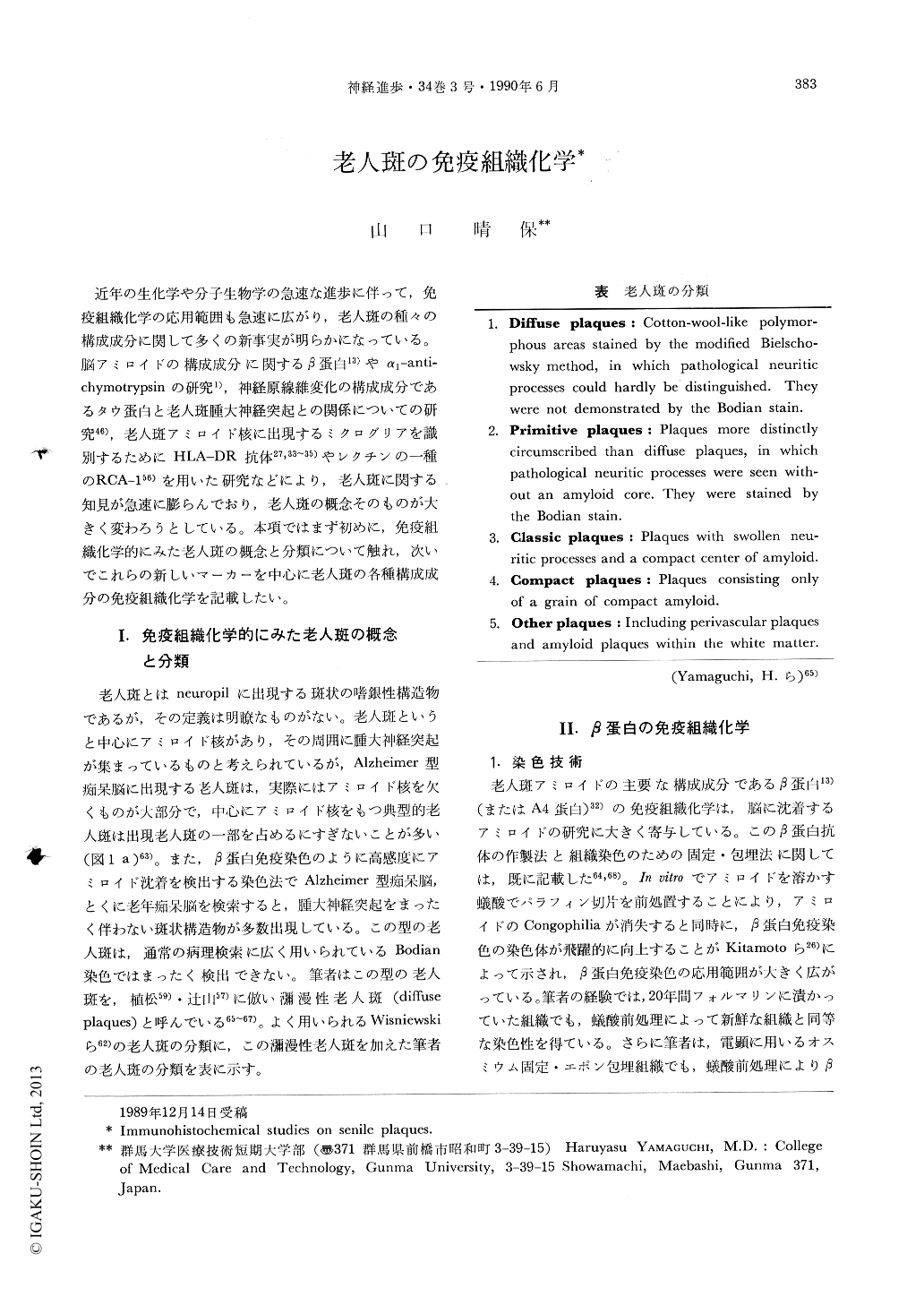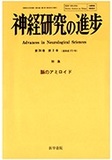Japanese
English
- 有料閲覧
- Abstract 文献概要
- 1ページ目 Look Inside
近年の生化学や分子生物学の急速な進歩に伴って,免疫組織化学の応用範囲も急速に広がり,老人斑の種々の構成成分に関して多くの新事実が明らかになっている。脳アミロイドの構成成分に関するβ蛋白13)やα1-antichymotrypsinの研究1),神経原線維変化の構成成分であるタウ蛋白と老人斑腫大神経突起との関係についての研究46),老人斑アミロイド核に出現するミクログリアを識別するためにHLA-DR抗体27,33~35)やレクチンの一種のRCA-156)を用いた研究などにより,老人斑に関する、知見が急速に膨らんでおり,老人斑の概念そのものが大きく変わろうとしている。本項ではまず初めに,免疫組織化学的にみた老人斑の概念と分類について触れ,次いでこれらの新しいマーカーを中心に老人斑の各種構成成分の免疫組織化学を記載したい。
Immunohistochemical classification of senile plaques (SP)
In addition to “primitive”, “classic”, and “compact” (“burned-out”) plaques, I demonstrated the presence of “diffuse plaques”, which were not detected by the Bodian stain because they lacked altered neurites (Table). Moreover, I have reported that the majority of SP in SDAT brains were diffuse plaques, and thus were not of classic type previously considered to be most typical to ATD.

Copyright © 1990, Igaku-Shoin Ltd. All rights reserved.


